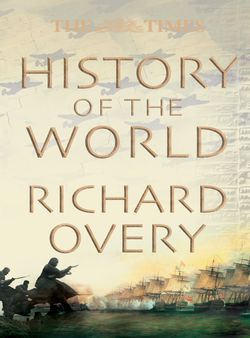Читать книгу The Times History of the World - Richard Overy - Страница 24
300 BC TO AD 1300 PEOPLES OF MESOAMERICA
ОглавлениеMany societies in the Americas changed little in the 2000 years before 1300. In Mesoamerica, however, complex societies were developing by the end of the first millennium BC. They then underwent cycles of growth and decline that included periods of outstanding intellectual and artistic achievement.
By 300 BC, almost every way of life that the Europeans would later encounter had developed in Mesoamerica: while some societies in northern Mexico continued to live by hunting, fishing and gathering, most had adopted farming and some were developing into states that extended their influence by trade or force.
THE RISE OF TEOTIHUACÁN
Earlier developments in Mesoamerica were eclipsed in about AD 100 by the sudden rise of Teotihuacán. The city grew to about 200,000, much larger than cities in the Old World at the time. There are doubts about the nature of the city’s economy but the centre—with the Temple of Quetzalcoatl and the Pyramids of the Sun and the Moon—was clearly planned for rites that involved human sacrifices. The city also possessed thousands of artisans who produced many items for foreign trade, including many articles made of obsidian, which they obtained from mines they controlled at Pachuca. Whether or not in association with trade, the Teotihuacános’ influence spread widely through present-day Mexico and Guatemala and was apparent in their distinctive pottery, crafts and architecture. In the 7th century AD Teotihuacán was attacked either by insiders or outsiders, or both, and its power destroyed, although it continued to function as a town.
THE RISE OF THE MAYA
At the same time the small but brilliant kingdoms of the Maya flourished. Their capitals were pyramid-studded ceremonial centres with densely settled suburbs. Voluminous inscriptions reveal a sophisticated but typically Mesoamerican concern with astrology. For a long time it was not understood how these cities in a tropical forest were supplied with food. It now seems they built terraces, drained fields and made extensive use of game and fish. However, whether it was on account of the chronic wars that are recorded, or of popular discontent, or of environmental degradation by excessive population—or of all of these factors—most of the towns were abandoned between AD 790 and the mid-9th century. Many districts revived later in what is known as the Post-Classic period, but the Maya never regained their grandeur.
THE RISE OF THE TOLTECS
The Maya “collapse” followed the dissolution of Teotihuacán in about 700. But between these poles of power a new generation of thriving towns had emerged, including some of Teotihuacán’s protégés, such as Cholula, which established their independence from the traditional order. They appear to have been eclipsed in turn by the Toltecs, soldiers and probably traders, whose influence subsequently extended throughout Mesoamerica and beyond. In about 1175 their reign, too, ended, possibly on account of refugees from the north driven south by changing climatic conditions. Meanwhile, two Nahua-speaking migrations from central Mexico had extended Mesoamerican influence to societies on the Pacific coastal plain as far south as Costa Rica.
